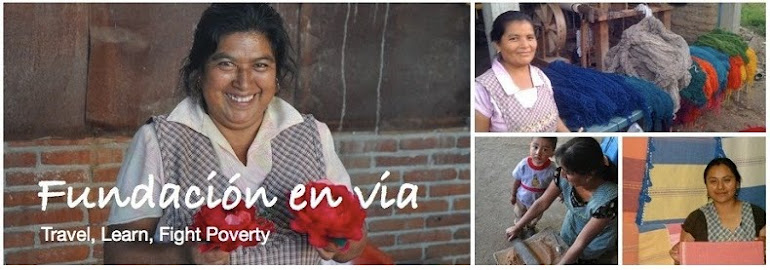Normal 0 false false false EN-US JA X-NONE
BY CHARLOTTE NEWMAN
What plans do you have for tonight? What did you do last weekend? When is your next vacation?
For most of us, these are questions we hear and ask quite frequently. We expect to discuss plans to go out after work, to travel, or to relax at home. We assume that at some point, everyone has a bit of free time to spend as they please. But for many of the women of En Via, this is simply not the case. If you were to ask one of these women about her plans for after work, you probably won't get the answer you were expecting.
Most of the women's businesses are extensions of their homes. The weavers in Teotitlán prepare their wool and make their rugs in the home, stopping only to make lunch or dinner for their family in the next room over. The leatherwork in Santo Domingo Tomaltepec is also done at home, and many women have comedores (small restaurants), or shops in the front room of their houses.
Many of us in the Western world enjoy the benefits of working from home, and even more probably wish that they could. But as most of us who have that opportunity soon discover, combining work and home life can be exhausting. We have to set boundaries and adhere to a schedule so we don't go crazy working too much (or working too little, whichever type you are!).
The women of En Via don't have these boundaries. For a woman that owns a shop, her lunch is interrupted if someone comes by for a box of milk. Even after closing hours someone may stop by and knock on the door, looking to buy something. When there is finally a break from work, there is the cooking, cleaning, and raising of the children to attend to. It is normal for women to wake up at four thirty or five in the morning to begin work, and it is commonplace for them not to stop until they go to bed.
The luxury of free time that most of us cherish so much, to read a book or watch TV, simply does not exist in these villages. We, the children of the nine to five workday, probably would not last a week with the workload of the women of Fundación En Via. And if we did, can you imagine the vacation we'd need afterward?
I personally have two jobs that I'm able to do at home, and I'm fortunate in that it allows me to live comfortably in Oaxaca and still devote much of my time to En Via. However, I definitely fall into the category of people who have difficulty separating work and home life. The discipline of our borrowers and the positivity and happiness they maintain sets an inspiring example for me, and I genuinely hope to achieve their work ethic one day!
As I think about my plans for the evening, the weekend, or my next vacation, I for one will remember not to take my bedtime reading for granted, and to remember the hardworking women of En Via the next time I'm dreaming about a week at the beach.

















